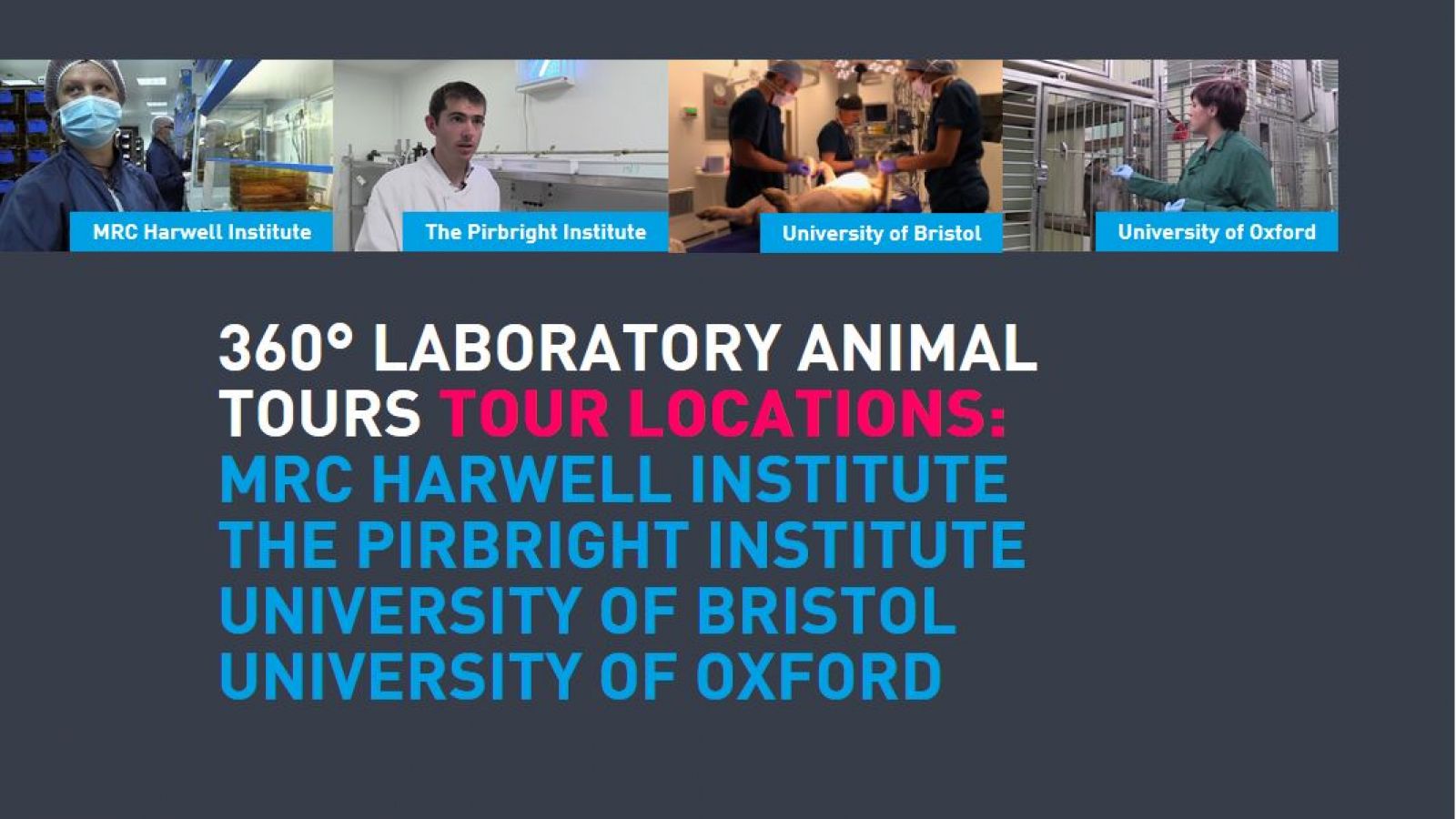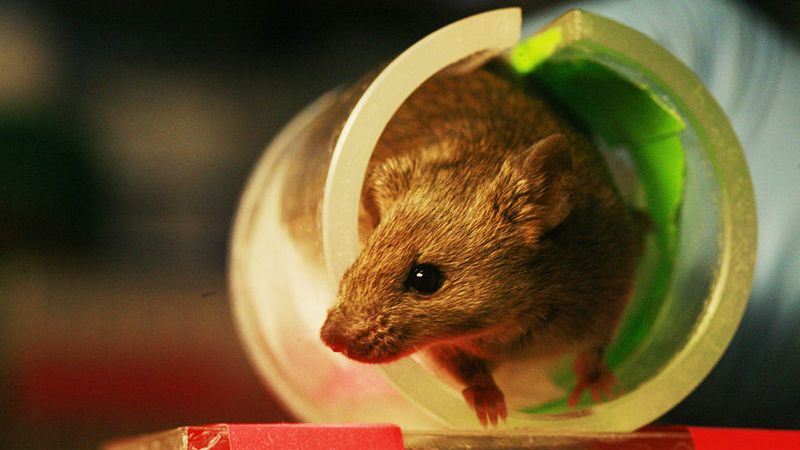
This is the second article in our 2019 series reviewing achievements during the first ten years of UAR.
The other side of the changing room
How do you show the general public - and especially school students - around an animal facility? It takes three well-behaved adults at least five minutes to strip and change into classic animal facility fashion – rubber clogs and scrubs, hairnet and gloves, and if you are (un)lucky, a facemask with adjustable nose pinch – so you have to admire the places that do organise school visits.
But what if your facility is a little remote, or pretty full when everyone who is usually there turns up for work? Or – as was the case at The Pirbright Institute – you specialise in dangerous* animal disease viruses?
Our answer was to harness technology and make virtual tours
You might have seen an estate agent or hotel offering a 360 photographic view of their premises online but this was not the trigger for us, it was colleagues in France who created the first (as far as I am aware) virtual tour of an animal facility back in 2015.
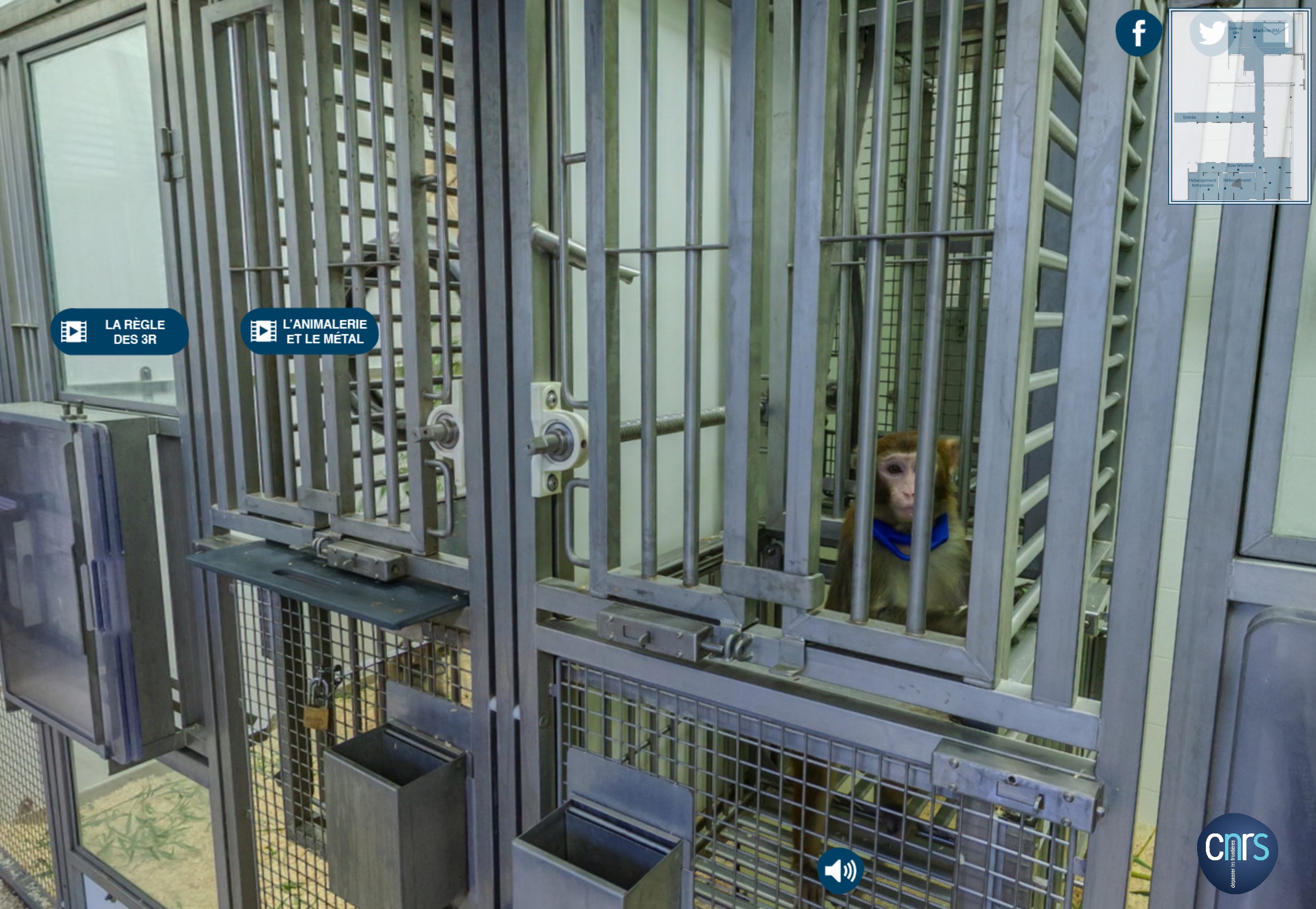 The Centre National de la Recherche Scientifique (National Centre for Scientific Research) is a public organisation under the responsibility of the French Ministry of Education and Research. As part of their public outreach they produced an interactive virtual visit to a primate facility. This combines key facts about animal use in France with a virtual 'walk-through' or tour of a facility. You can visit it here: http://visite-animalerie.cnrs.fr/#/accueil/ Surely we could do the same - or better? I started contacting colleagues throughout our membership and quite quickly four institutions – or at least key people within them – volunteered to help.
The Centre National de la Recherche Scientifique (National Centre for Scientific Research) is a public organisation under the responsibility of the French Ministry of Education and Research. As part of their public outreach they produced an interactive virtual visit to a primate facility. This combines key facts about animal use in France with a virtual 'walk-through' or tour of a facility. You can visit it here: http://visite-animalerie.cnrs.fr/#/accueil/ Surely we could do the same - or better? I started contacting colleagues throughout our membership and quite quickly four institutions – or at least key people within them – volunteered to help.
These ambassadors were crucial in seeing the project through to completion. They organised our photographic and filming timetables, lined up people to interview, overcame institutional reservations, reviewed draft versions, provided expert commentary and were all very pleasant and patient into the bargain.
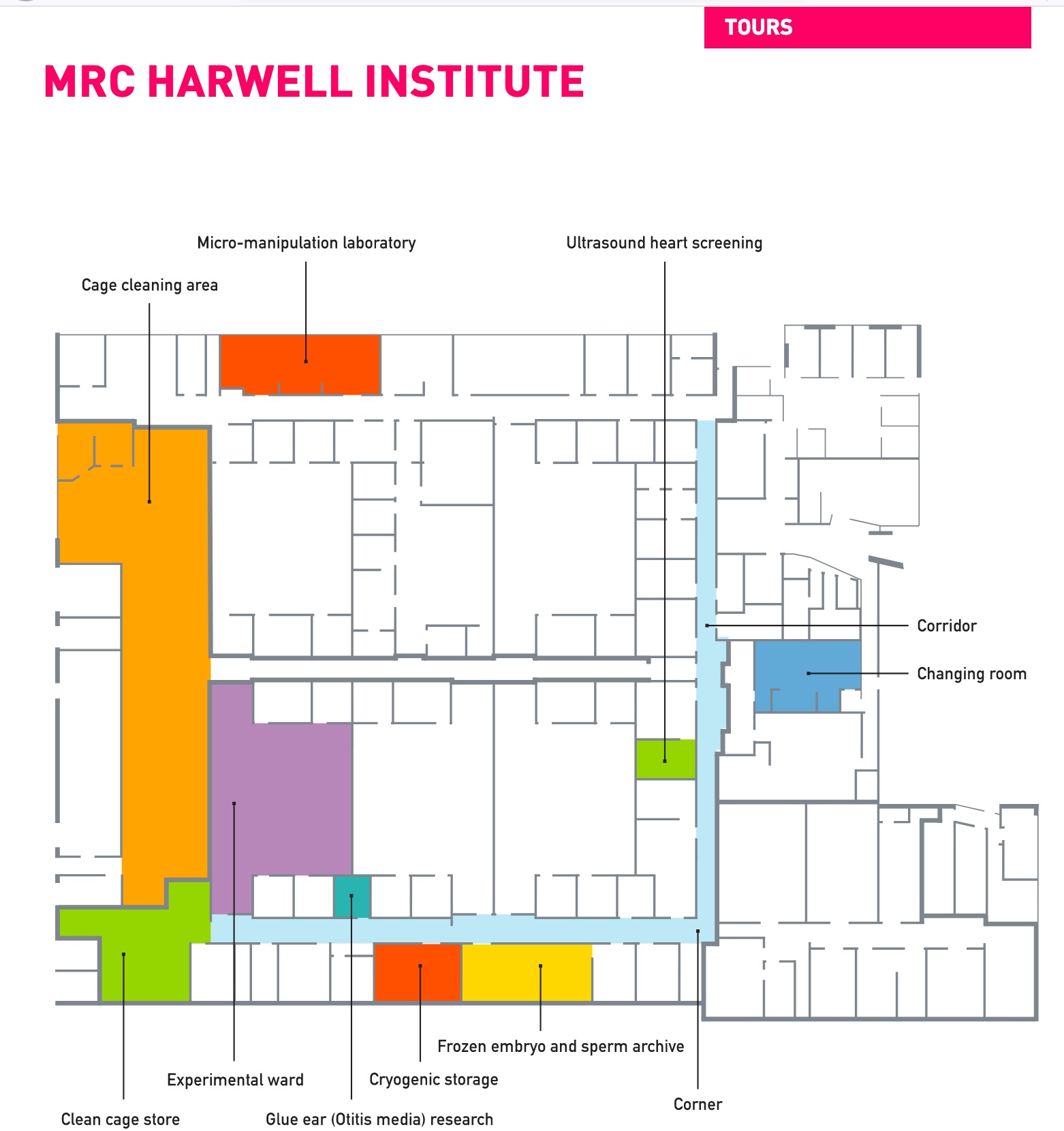 So what form did the tours take? Well, we wanted to make it as clear as we could that we were not hiding anything, so we provided maps or diagrams to aid navigation to a series of 3600 photographic scenes. It was also possible to follow the arrows from one scene to another. Each scene contained a variety of information, perhaps labels, some text, a video interview with a member of staff, or simply a video showing people at work.
So what form did the tours take? Well, we wanted to make it as clear as we could that we were not hiding anything, so we provided maps or diagrams to aid navigation to a series of 3600 photographic scenes. It was also possible to follow the arrows from one scene to another. Each scene contained a variety of information, perhaps labels, some text, a video interview with a member of staff, or simply a video showing people at work.
You can see the end result here: http://www.labanimaltour.org
One of the aspects of being a producer is that you make something, put it out there, and move on to the next thing, wondering what, if any, feedback you’ll get. Well, since the tours went live in 2017 I’ve been delighted to hear that as well as being viewed many times in the UK and around the world, the website has been used in careers education, not one of the original aims, and that it has given some facility staff an opportunity to take a close look at what are pretty good places and reflect that perhaps their place could be a bit better. For example, one query from outside the UK asked what sort of glass was used in the primate facility in Oxford.
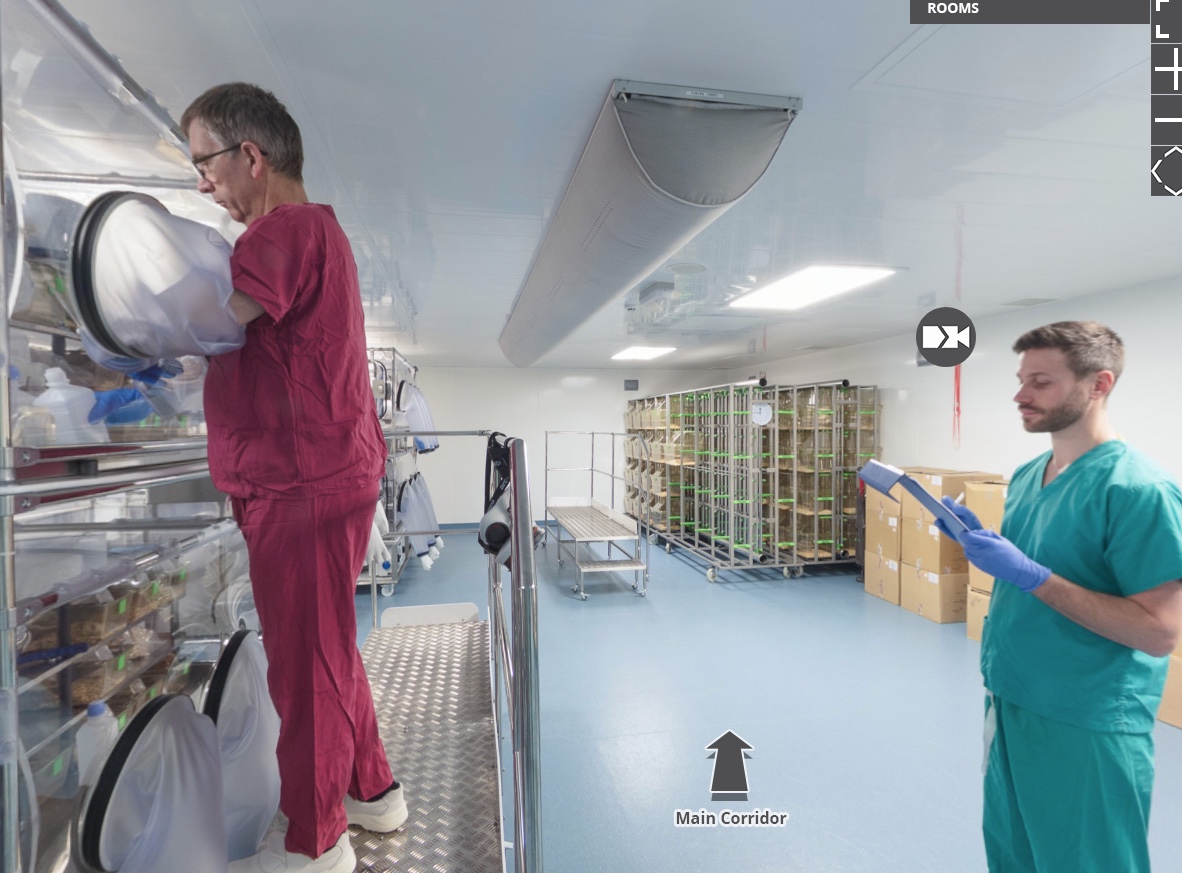
Since then we’ve worked with Manchester University to make their lab tour: https://www.manchester.ac.uk/research/environment/governance/ethics/animals/virtual-tour/
In another really nice development, GSK won an Openness Award in 2018 for their real-time facility tour where the viewer watches (through Skype) technicians show you around their facility. This is really interactive as you can ask questions and ask to be shown close-ups of animals or particular bits of kit. Their set-up is in reach of any facility with a decent Wi-Fi connection and a smartphone.
I’ll finish with my strongest memories from the year we made the first four tours. Firstly the overwhelming focus animal technicians have on caring for their animals. Secondly, the patience of scientists working with me to translate their work into something accessible to any interested layperson.
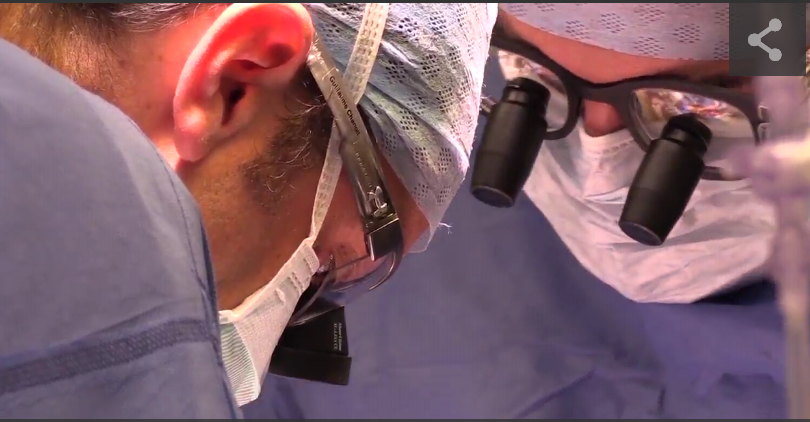 The amazing precision of two big men sewing an artificial blood vessel into a blood vessel in a pigs neck with stitches I could barely see even through a zoomed camera. http://www.labanimaltour.org/tours/bristol/#node1
The amazing precision of two big men sewing an artificial blood vessel into a blood vessel in a pigs neck with stitches I could barely see even through a zoomed camera. http://www.labanimaltour.org/tours/bristol/#node1
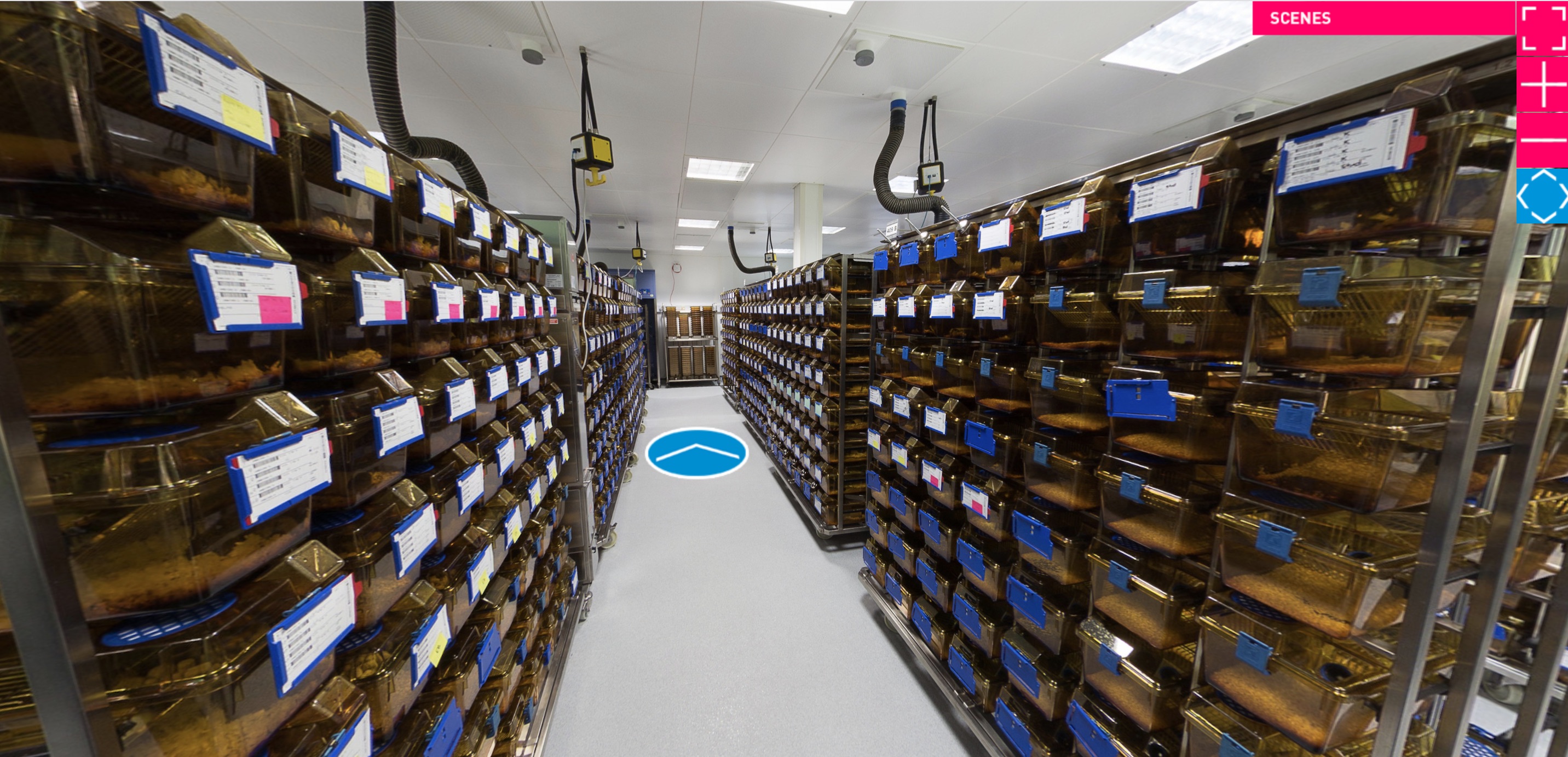 That MRC Harwell has more mice than Didcot has humans.
That MRC Harwell has more mice than Didcot has humans.
That macaques are both familiar and very foreign in their behavioural responses. They are not children, they are not tame, and so the process of training them to play computer games to reveal their thought processes is quite extraordinary. http://www.labanimaltour.org/tours/harwell/#node4
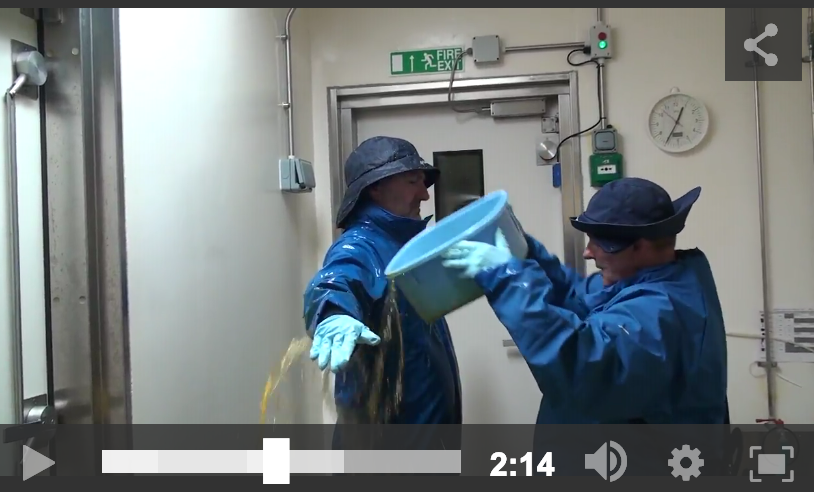 And if you want to work with really unpleasant animal diseases, as they do in The Pirbright Institute, you have to be willing to undergo an outer-clothing iodine bucket shower as well as the more familiar showering routine. http://www.labanimaltour.org/tours/pirbright/#node6
And if you want to work with really unpleasant animal diseases, as they do in The Pirbright Institute, you have to be willing to undergo an outer-clothing iodine bucket shower as well as the more familiar showering routine. http://www.labanimaltour.org/tours/pirbright/#node6
Incidentally, this was the only facility where we did not do full 360 photography. The sterilisation routine would have cooked our cameras on the way out. Fortunately, the facility has an SLR camera so we improvised with that, and I took in a video camera sealed in an underwater housing.
Lastly, the quality of the overall tour was down to using an expert photographer, web-designer, graphic-designer and 3600 tour maker. But the content would not have been possible without the champions who looked after us in each place.
*SAPO4/ACDP2 licenced: working with animal viruses that aren’t normally in the UK which, if present, would cause major disruption to the farming industry.
Last edited: 27 October 2022 18:53

